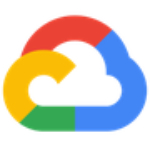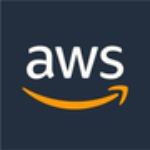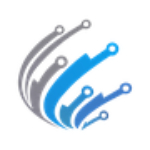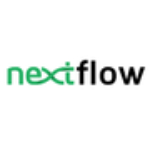List of Best Data Pipeline Software
Showing 10 of 17 productsGoogle Cloud Composer, the latest innovation from Google that brings together the power of cloud computing and data orchestration. Designed to simplify and automate complex workflows, Cloud Composer empowers businesses to achieve greater efficiency a...Read Google Cloud Composer Reviews
AWS Data Pipeline is a data management tool designed to help businesses efficiently and reliably process, transform, and move data between different sources and destinations. With its user-friendly interface and vast array of features, AWS Data Pipel...Read AWS Data Pipeline Reviews
Dropbase is a solution for your data management needs. Simplify your workflow and streamline your processes with our powerful platform designed to handle all your data needs. With Dropbase, say goodbye to the hassle of manual data entry and welcome e...Read Dropbase Reviews
Apache Airflow is a is a open-source tool that streamlines your workflow management process. With Airflow, you can easily schedule and monitor complex data pipelines, allowing for seamless collaboration and automation. Say goodbye to manual tasks and...Read Apache Airflow Reviews
Datastreamer is a software that allows you to effortlessly access and analyze real-time data from multiple sources, helping you make informed decisions and stay ahead of the curve. With its user-friendly interface features, Datastreamer revolutionize...Read Datastreamer Reviews
TrueFoundry the ultimate software solution for businesses looking to streamline their processes and maximize efficiency. With its intuitive interface features, TrueFoundry is revolutionizing the way organizations operate. From managing tasks to analy...Read TrueFoundry Reviews
Gathr is a software platform that streamlines the process of planning and organizing events of any size. With its user-friendly interface and powerful features, Gathr takes event planning to a whole new level, making it easier and more efficient than...Read Gathr Reviews
Arcion is a software designed to simplify all your project management needs. This all-in-one platform streamlines tasks, tracks progress, and enhances collaboration for seamless project execution. With Arcion, say goodbye to chaos and hello to effici...Read Arcion Reviews
Nextflow is a and user-friendly software that streamlines the creation and execution of complex workflows. With its intuitive interface and customizable features, it simplifies the process of designing and managing data pipelines for data-driven rese...Read Nextflow Reviews
Gravity Data the latest software designed to revolutionize the way data is analyzed. With its advanced technology, Gravity Data offers unparalleled accuracy and efficiency in processing complex data sets. Say goodbye to tedious data analysis and hell...Read Gravity Data Reviews
- What Is Data Pipeline Software?
- Top Reasons Why Businesses Need Data Pipeline Software?
- What Are the Top Key Features of Data Pipeline Software?
- What Are the Top Benefits of Data Pipeline Software?
- What Are the Steps to Choose the Right Data Pipeline Software?
- What Are the Types of Data Pipeline Software for Different Industries?
- What Are the Technology Trends for Best Data Pipeline Software?
- What Are the Deployment Options for Data Pipeline Software?
What Is Data Pipeline Software?
Data pipeline software refers to a specific category of computer software designed to facilitate the automated transfer of data between different systems. This technology is commonly employed for the purpose of integrating data sources, performing data transformation and aggregation, optimizing data flows, and generating reports.
The utilization of data pipeline management tools is primarily observed within the context of a comprehensive enterprise data management framework. Data pipeline monitoring tools are a valuable tool for facilitating the efficient and dependable transfer of data between different systems within organizations.
This will facilitate the establishment of a direct correlation between disparate data sources, the processing of the data, and its integration into subsequent systems. The use of this solution streamlines the administration of substantial volumes of data, guaranteeing the real-time precision of the data.
Data pipeline software has the capability to automate a range of reporting operations and optimize analytics procedures. This process facilitates the consolidation of data from various sources into a unified output. This facilitates the analysis of data and the generation of real-time reports.
Additionally, data pipeline management tools possesses functionalities that facilitate the automation of data cleansing, indexing, and categorization procedures. In general, data pipeline solutions serves as a valuable and effective instrument that facilitates the seamless integration, processing, and reporting of substantial volumes of data derived from many origins for enterprises.
Ensuring data accuracy and optimizing efficiency and productivity in tasks pertaining to data management are facilitated through its utilization.
Top Reasons Why Businesses Need Data Pipeline Software?
1. One of the key benefits of automation in business is its ability to streamline operations, resulting in significant time and cost savings.
2. The data pipeline management tools effectively combines diverse data sources, hence enhancing the efficiency of data analysis.
3. One of the benefits of this system is the reduction in errors associated with manual coding and manual data entry.
4. One of the key benefits of this technology is its ability to facilitate real-time data processing, hence enhancing the quality of decision-making processes.
5. The implementation of data pipeline solutions enhances the scalability within the data environment, hence facilitating the potential for future expansion.
6. The data pipeline management tools is capable of accurately detecting and identifying data points, hence enhancing the overall correctness of the data.
7. The consolidation of consumer data into a single source enhances the customer experience.
8. One of the benefits of user-friendly dashboards is the enhancement of collaboration and insight with stakeholders.
9. The data pipeline tools is capable of identifying and analyzing patterns within datasets, leading to expedited and more comprehensive understanding of customer behavior and market trends.
10. The implementation of automated testing, coupled with the generation of results, streamlines the data validation procedures.
11. The implementation of data encryption during the transmission procedure serves to bolster data security.
12. Data pipeline solutions feature offers valuable perspectives derived from interconnected databases in order to enhance the efficiency of the system.
13. The application uses machine learning techniques to identify and classify unlawful behaviors, fraudulent actions, and abnormal occurrences.
14. The data pipeline tools seamlessly facilitates the exchange of data between various data structures.
15. Ensures adherence to legal requirements and standards, such as the General Data Protection Regulation (GDPR).
What Are the Top Key Features of Data Pipeline Software?
1. Automated Data Processing: The architecture of data pipeline software should encompass the automation of all facets of data processing, encompassing data gathering, purification, transformation, and loading.
2. Data Governance & Security: To maintain the integrity and compliance of data, it is imperative for data pipeline software to have essential security features such as access control, data encryption, and data audits.
3. Data Warehousing & Analytics: The functionality of data pipeline tools should encompass the facilitation of data storage and analytics in order to generate valuable insights that can inform decision-making processes.
4. Cloud Architecture: The functionality of data pipeline solutions should encompass the facilitation of data storage and analytics in order to generate valuable insights that can inform decision-making processes.
5. Event-driven Processing: The functionality of data pipeline monitoring tools should encompass the capability to identify, acquire, and handle events in real-time.
6. Machine Learning Integration: The incorporation of machine-learning algorithms into data pipeline software is essential to facilitate sophisticated analytics.
7. Real-time Monitoring: The functionality of data pipeline software should have the capability to facilitate real-time monitoring of data flows and ensure the integrity of data quality.
8. Stream Processing: The functionality of data pipeline tools should encompass the capability to process streaming data in real-time.
9. Visualization & Collaboration: The design of data pipeline monitoring tools should prioritize the facilitation of collaboration and enhanced visibility by incorporating interactive data visualizations.
10. Flexible Data Connectors: The data pipeline solutions should possess the capability to seamlessly integrate data from diverse sources, including databases, APIs, and flat files.
What Are the Top Benefits of Data Pipeline Software?
The top benefits of data pipeline software include:
1. Automation: Data pipeline software enables the automation of data intake, transformation, and loading processes, hence reducing the need for manual intervention.
2. Scalability: The scalability of the best data pipeline tools enables it to effectively handle larger datasets.
3. Flexibility: Data pipelines can be customized to accommodate the specific requirements of diverse clientele, contingent upon the distinct data sources, formats, and destinations involved.
4. Improved Performance: The utilization of data pipelines can be employed to enhance the efficiency of data processing processes.
5. Enhanced Security: The best data pipeline tools can be equipped with security protocols and processes to safeguard sensitive data from unauthorized access.
6. Cost Savings: The implementation of automated data transfer and processing procedures leads to the elimination of human labor and yields substantial cost savings.
7. Integration Capabilities: Data pipelines have the capability to be seamlessly linked with a diverse range of applications and enterprise systems.
8. Data Visualization: The best data pipeline tools commonly have visualization functionalities to facilitate the identification of patterns and trends within the data.
What Are the Steps to Choose the Right Data Pipeline Software?
1. Identify the required features and functions: It is imperative to allocate sufficient time for careful deliberation over the requisite features and functions that the program must provide in order to effectively cater to one's own requirements.
The aforementioned features encompass data manipulation capabilities, data cleansing functionality, data storage capabilities, data retrieval capabilities, interface and platform support, scalability, security measures, and cost considerations.
2. Research the software options: Conduct an investigation on data pipeline software that aligns with the specific requirements. This study aims to provide a comparative analysis of the features, functionalities, and costs associated with different software packages.
3. Test the software: After the identification of software items that align with the specified requirements, it becomes crucial to conduct testing on these products. Evaluate the software's performance by executing a data pipeline and quantifying the outcomes.
4. Evaluate the pros and cons: Upon conducting a comprehensive assessment of the program, it is imperative to analyze its advantages and disadvantages. When evaluating a particular product or service, it is important to take into account many key factors, including cost, ease of use, scalability, and support.
These factors play a significant role in determining the overall value and suitability of the product or service for a given context. By carefully considering the financial implications, user-friendliness, potential for growth, and availability of assistance, individuals and organizations may make informed decisions
5. Make a decision: After doing a comprehensive analysis of the advantages and disadvantages of the program, the next step entails reaching a conclusive determination. Choose the software that aligns with your requirements and is most suitable for your financial constraints.
What Are the Types of Data Pipeline Software for Different Industries?
Data pipeline software plays a crucial role in numerous contemporary industries, including but not limited to e-commerce, healthcare, banking, media and advertising, and retail.
A wide range of data pipeline software options are currently available, each offering customization capabilities to cater to diverse industries.
1. ETL (Extract, Transform, and Load) Data Pipeline software: This particular software application is designed to extract data from various sources, subsequently converting the data into a predetermined format, and ultimately transferring it into a designated system.
This technology is frequently employed by sizable corporations and institutions that necessitate the integration of data from diverse origins in order to centralize it for various objectives, such as analysis or reporting.
2. Data Warehousing Data Pipeline software: The best data pipeline tools in question is designed to gather data from many sources and afterwards store it in a centralized database. By enabling a thorough examination of trends and patterns, it aids companies in acquiring valuable insights.
3. Data Analysis Data Pipeline software: This software is utilized for the purpose of examining and evaluating data derived from diverse sources. It helps users to make decisions based on trends and patterns identified in the data.
Additionally, it aids in the automation of numerous mundane processes related to data analysis, including but not limited to filtering, sorting, and visualizing.
4. Real-Time Processing Data Pipeline software: This program facilitates the processing of data throughout its transmission across several sources, hence assuring robust data quality, security, and governance. The utilization of real-time processing data pipeline software is of utmost importance for sectors that want prompt reaction times and precise data analysis.
5. Streaming Data Pipeline software: The aforementioned data pipeline monitoring tools are utilized for the purpose of analyzing streaming data in a real-time manner. The utilization of data tracking enables firms to effectively monitor and analyze evolving patterns, facilitating rapid responses to crises.
The utilization of streaming data pipeline software has witnessed a notable rise in adoption within the retail and media industries. This software is employed to analyze customer purchasing patterns and facilitate the creation of customised experiences.
What Are the Technology Trends for Best Data Pipeline Software?
The prevailing technology trends observed in the most advanced data pipeline software are outlined below:
1. Cloud-based data processing: Cloud-based data pipelines enable enterprises to efficiently process their data in real-time, eliminating the need for capital expenditure on hardware acquisition and installation. The scalability of these pipelines allows for the processing of data of any magnitude.
2. Automation: The utilization of automation in data pipelines is increasingly prevalent. Automation facilitates the efficient processing, cleansing, and analysis of data, while concurrently minimizing human interaction, hence yielding outcomes of enhanced accuracy.
3. Scalability: Scalability is a crucial requirement for a data pipeline platform to effectively accommodate expanding data collections. This holds particular significance for expansive businesses that encounter a substantial amount of data requiring processing.
4. Security and reliability: In order to safeguard data from external threats, it is imperative that data pipelines possess robust security measures and demonstrate a high level of reliability.
In order to ensure the integrity and confidentiality of data pipelines, it is imperative to incorporate security measures such as access control, permission-based access, and data encryption.
5. Data integration: The integration of data holds significant importance within the context of data pipelines. In order to ensure the processing and analysis of accurate findings, it is imperative for these pipelines to possess the capability to smoothly combine data from diverse sources.
What Are the Deployment Options for Data Pipeline Software?
The available deployment choices for data pipeline management tools are contingent upon the particular product being considered.
However, few prevalent strategies include cloud-based deployment, on-premises deployment, and Software as a Service (SaaS) deployment.
1. Cloud-based deployment commonly entails the establishment and operation of data pipeline platform via a hosted cloud platform, such as Amazon Web Services (AWS) or Microsoft Azure.
2. On-premise deployment refers to the installation of data pipeline software on a server located within the organization's premises, enabling direct control and management.
3. In contrast, SaaS deployment entails the utilization of a service provider who hosts and maintains the data pipeline platform.










